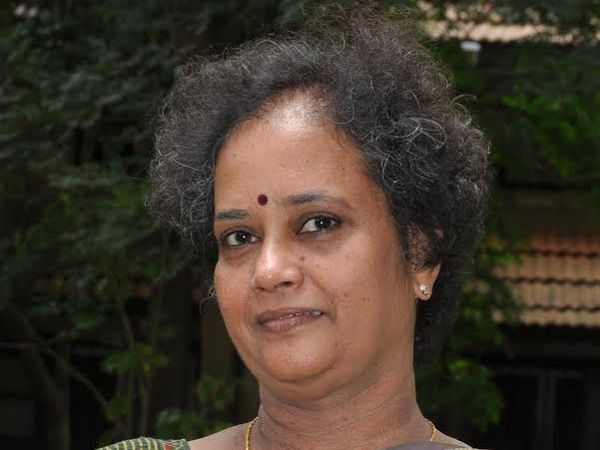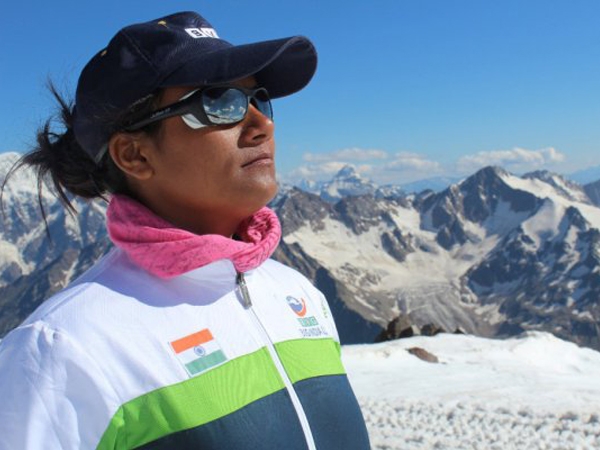
Dr. A.L. Sharda believes that advertising influences society in a big way.
It’s not every day that you find an insurance ad talking about saving for a daughter’s education. You’re more likely to see fathers saving up for a wedding, right? But the good news is that change is here. The beti in the ad world is breaking gender stereotypes and being portrayed as the financially responsible and aspiring career woman that she is today. Thanks to Laadli – a girl child campaign against sex selection and the falling sex ratio – Indian advertising is slowly changing the way Indian society perceives its women.
It was only after being fed with innumerable ads that projected young boys as the hardy lot (playing with mud and training for karate competitions), and quiet, pretty girls alongside their mothers for beauty products that Dr A.L. Sharda was prompted to sit up and take note of the disappointing trend. The Director at Population First, a communication and advocacy NGO, is now on a mission to change the way Indian advertisers have portrayed women over the years. In an interview with iDiva.com, Dr. A.L. Sharda tells us why sensitising the ad industry when it comes to women’s issues, is crucial in this day and age.
Despite changing gender roles, Indian ads still stereotype the Indian woman and girl child. Why do you think we have not been able to tackle the issue?
Well, change is happening for sure but on a miniscule level. The problem is that advertising professionals are not thinking out of the box. What we are doing is urging them to explore the possibilities to bring about an egalitarian equation in the portrayal of women. For instance, why only show a housewife in a cooking oil ad? Why can’t we have a man helping the woman set up the table? Little moderations like these can bring about considerable change in the way society looks at women.
Since advertising has a greater purpose of selling products, how challenging is it to sensitise them about such issues?
Most advertising professionals are aware of this trend. The solution is to simply avoid them because advertising influences society in a big way. What big brands can do is put more thought into exploring the possibility of breaking such clichés keeping their main objective or USP in mind. After all, advertising cannot move away from selling products!
The fact that more women are buying insurance policies for themselves is reason enough for advertisers to target them. I think lazy advertising leads to stereotypes!
How has Laadli’s efforts in projecting the girl child in the media made an impact?
For the past decade, we have been working with popular media such as advertising agencies as well as publications to sensitise them about the portrayal of women. Our workshops have been aimed at addressing the intrinsic biases present in every individual that percolate into their work. Fortunately, some of the biggest agencies such as Leo Burnett, JWT and Lintas have been forthcoming in their support of our efforts.
It has been heartening to note the gradual shift in advertisements of some industries. Insurance, for instance is today about education of the girl rather than marriage. The girl being given the health drink and being encouraged to participate in competitive sports is also a welcome departure from the earlier ads where only boys were shown as being given health drinks. Starting with increased visibility of girls in ads, some of the agencies are focusing on gender issues even for products which are not women related. Insurance policies and home loans – two of the traditional male bastions – are now designing products to woo women, may be because of greater participation of women in household financial planning particularly in the middle and higher income families. It is a welcome change from the earlier projections of women only as beneficiaries of the policy after the demise of the man.
This shift has, undoubtedly, been one of our biggest wins.
They say gender sensitisation starts at home. What are your thoughts about the same?
A child learns as she sees. It is imperative that we set the right example for children at home to imbibe. No gender sensitisation training in schools would be of any help, if the power equations, roles and responsibilities between parents are not equal. If a boy sees his father ogling and passing lewd comments on a woman, his son would not learn to believe that women are not to be ogled at and teased. If the mother accepts injustice, violence and dominance from the father, it is very unlikely that the daughter will learn to stand up for her own rights.
What is the response like at Laadli workshops that address this issue?
We organise workshops as well as seminars where prominent admakers and industry professionals have shown interest and are conscious about this paradigm shift. The dialogue is usually with creative directors and industry experts who are actually keen about projecting the real woman of today. Interestingly, it has been accepted well.
How do you think we can bring about gender equality and free our country of issues like illegal sex selection et al?
Mindsets have to change. Once we are able to bring about a shift in the majority mindset that perceives a girl child as a burden and women as the weaker sex, a lot of our social evils will be tackled.
However, it is important to identify key opinion leaders and influencers from different stake holder groups – law makers, policy planners, administrators, judiciary, teachers and change their mindsets. This would ensure that laws and policies are drafted with greater gender sensitivity and implemented with greater efficiency, which will have a more positive impact on the way women are perceived and treated in society.
It is a fact that India was always a son-preferring society, but it is only after the new ultrasound technology has become available, that the sex ratios started recording steep declines. Monitoring and regulating these technologies effectively would make considerable impact on the practice. Effective implementation of all laws pertaining to women will reduce the insecurity and aversion of families to daughters. It is also imperative that we make our families, neighborhoods, educational and work places more safe for women.
Do you have any campaigns planned for Women’s Day?
Yes we do. On March 8, we plan to launch the “I am Laadli” app on Facebook that will enable users to use the badge on their profile pictures. The idea is to simply feel happy, positive and celebrate the fact that we are wonderful women!
More On >> Women’s Rights




